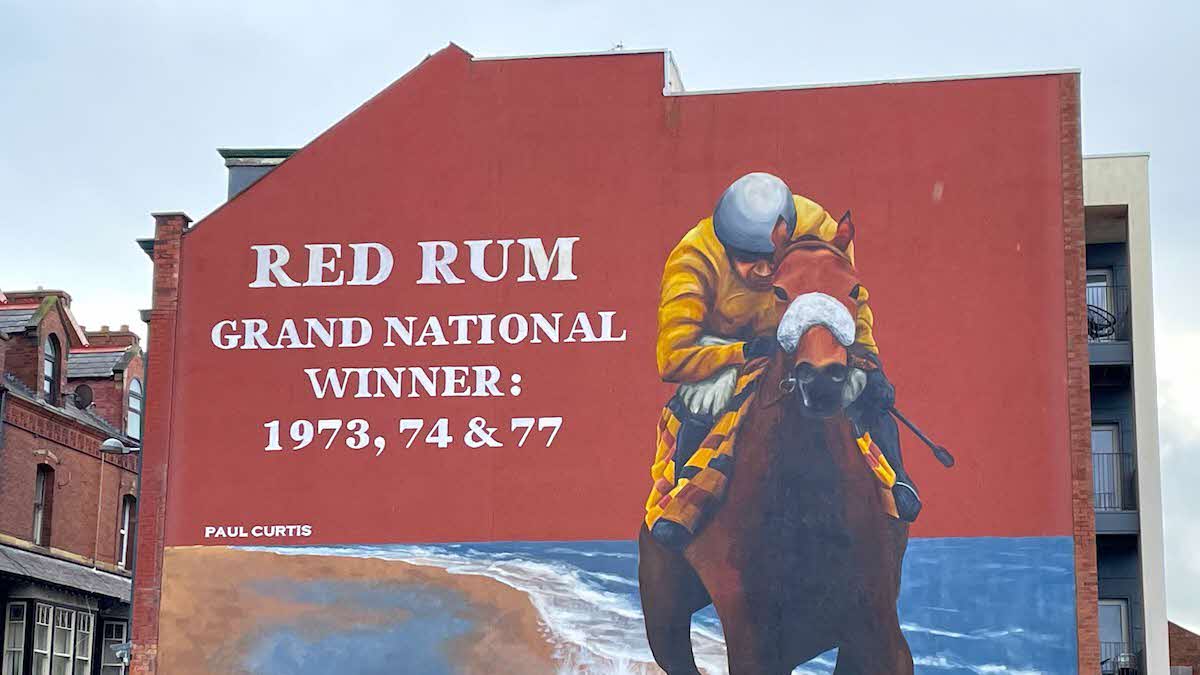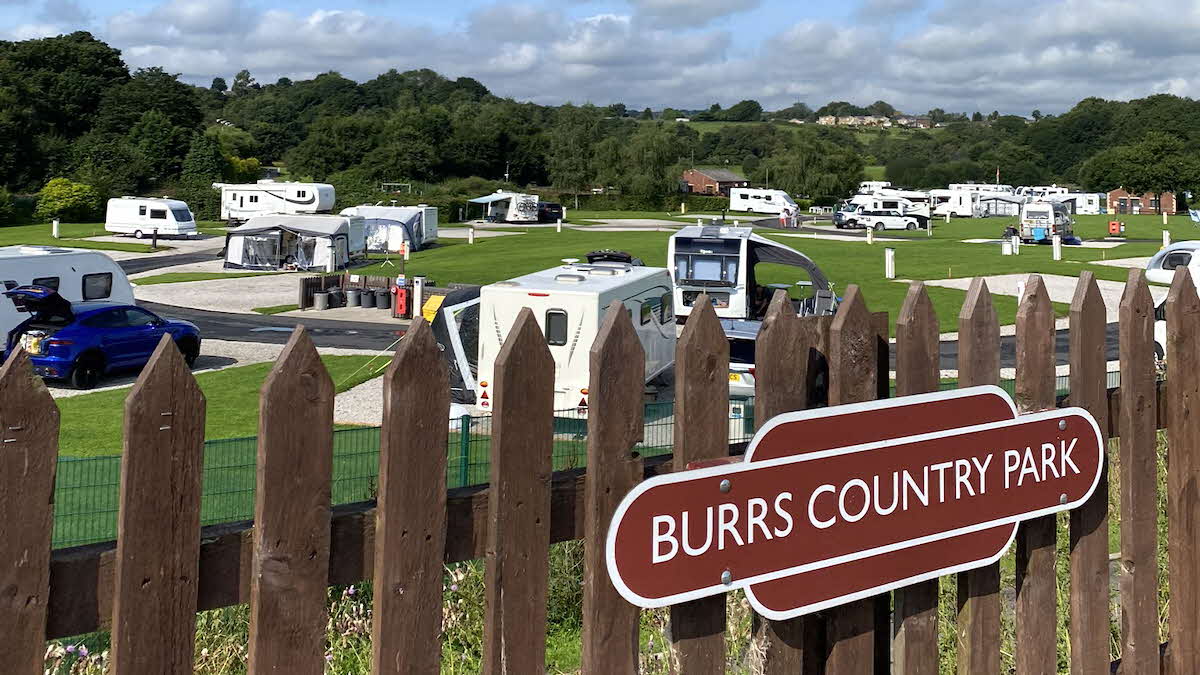Book a club campsite
Explore hundreds of Club campsites and plan for stays throughout the year. There are plenty of locations to choose from, search and book today.
Book nowJane McGowan takes in some of the sights and sounds of Merseyside, Cheshire and Lancashire
 Looking out over the Dee. Photo by member Sharon Sutcliffe
Looking out over the Dee. Photo by member Sharon Sutcliffe
When we think about tours of the north-west of England, the same landscapes tend to spring to mind: the lakes of Cumbria and the rolling fields of the western Yorkshire Dales, for example. However, this corner of the country is home to some iconic cities, beautiful countryside and Edwardian seaside resorts that are more than worth planning a trip around in their own right.
The first stop on my maddeningly-brief adventure in the region was Wirral Country Park Club Campsite. Nestled between undulating farmland and the Dee Estuary on the Wirral Peninsula, it sits within the 2,000-acre Green Flag-awarded park proper – the first in Great Britain to receive Country Park status.
The site itself is spacious and laced with mature trees, which not only enhance your on-pitch privacy, but also act as a home for the many species of bird that come and go throughout the year. It offers direct access to the park, Thurstaston Beach and the Wirral Way – a 12-mile path that can be enjoyed by walkers and cyclists (there is a separate trail for horseriders). The route, which offers views over the Dee Estuary towards Wales, is based on the track of an old railway, and it stretches from West Kirby to Hooton. Nature-lovers are in for treat as the old line is a thriving corridor of wildlife, providing refuge for hedgerow-hopping chiffchaffs and blackcaps, as well as hedgehogs, dragonflies, bats and bees.
I chose to visit on what seemed like the wettest week of 2023 – however, as I was soon to discover during this tour, poor weather need not hamper enjoyment of your holiday here.
 Port Sunlight
Port Sunlight
Following Assistant Site Manager Mark’s suggestion, I headed to Port Sunlight. This lovely model village offers a fascinating insight into the area’s social history. William Hesketh Lever – he of soap fame – built Port Sunlight to house his factory workers. According to the Village Trust, which today preserves the heritage of the village, Port Sunlight “represents one man’s vision to provide industrial workers with decent, sanitary housing in a considered architectural and picturesque form.”
Set in 130 acres of parkland, it is home to 900 Grade II-listed buildings, including an art gallery, church, bowling club, social club and train station. As you amble around you may see some familiar-looking houses – the area recently featured in the popular TV drama Peaky Blinders as well as the film Tolkien. For a more comprehensive tour, an Experience Port Sunlight ticket (£8 for adults; £5.50 for children) allows you to explore both the museum and the Edwardian worker’s cottage next door, detailing the lives of Lever Brothers’ employees with original artefacts and personal histories.
What was great about my tour of this region was that many attractions were accessible from multiple campsites, and the journey times between those sites were very manageable. My next scheduled stop was Chester Fairoaks Club Campsite – lined with ancient oaks (hence the name), it’s a bustling location that is open all year round.
The hot ticket in this area is Chester Zoo and, being only a 10-minute drive from the site, this famous attraction offers an unmissable day out. As well as being home to 27,000 animals, this attraction places an emphasis on conservation and education – it runs a fantastic programme, working to protect rare rhinos (it welcomed a baby in November 2023) and critically endangered mountain chicken frogs.
 Chester Cathedral
Chester Cathedral
However, with time at a premium, I instead opted to visit Chester itself on this occasion, to sample the majesty of this ancient city. If you fancy a canalside walk into town, there is a path from the site which takes around an hour, but there are buses too; travel information is available in the well-stocked on-site information office.
Once again, the weather wasn’t kind, but on arrival I set out on a stroll along the remarkable City Walls – Chester is the only city in Britain with a full circuit of ancient defensive walls, certain stretches of which date back almost 2,000 years.
There is plenty to see as you walk the walls – the surrounding streets, the Rows (of which more later) and the canal – but make sure you keep your wits about you as some parts are a little uneven and can be slippery. There are a few places to stop and sit as you make your way around, and the wall can be accessed at each of the city’s four main gateways – Northgate, Eastgate (with its famous clock), Watergate and Bridgegate. Look out for accessible points, which have ramps as well as steps.
The Chester Rows – a four-street cluster of higgledy-piggledy, two-storey buildings that date back to the 13th century – are a must-see. Now housing a mix of big-name and boutique shops and cafes, they add a pleasant twist to the traditional shopping trip – and all those stairs will certainly help you get your steps in. While there, see if you can spot Three Old Arches, which is said to be the oldest shopfront in England.
A trip to Chester Cathedral is also highly recommended; I was especially impressed by the welcome of its volunteers and staff who insist visitors need only donate if they really feel they can (the recommended amount is £5). The 1,000-year-old building offered a welcome refuge – the super-friendly café provided a lovely scone and coffee too!
There has been a church of one kind or another on the cathedral site, which stands in the north-eastern quarter of the city, since the 8th century. It has undergone various transformations, withstanding the dissolution of the monasteries, plagues and the English Civil War, during which an angry mob smashed its stained glass windows.
Today the cathedral is home to some wonderful treasures, including the only ‘cobweb’ picture in the UK, one of only a few that still exist worldwide. Cobweb paintings originated in the monasteries of the Tyrol in the 16th century – many workers were needed to gather spider and caterpillar webs, which were then cleaned and layered to form canvasses. The Chester painting – a portrait of Madonna and child on a canvas made from a moth caterpillar’s silken cocoon – is said to date back to the 19th century.
 Southport
Southport
You can’t possibly come to this part of the world without taking a ‘Ferry Cross the Mersey’ to enjoy the sites and, of course, the sounds of Liverpool. Everywhere you look there are tributes to the city’s most famous sons, The Beatles. You can pay homage to John, Paul, George and Ringo by visiting The Cavern (smaller and much warmer than you might think) or The Beatles Story, or by taking a tour of Lennon and McCartney’s childhood homes courtesy of the National Trust.
The Liver Birds are also Liverpool icons, and it is now possible to visit them at the Royal Liver Building, which has recently opened its doors to the public. Standing proud on the waterfront, tours of the building start in the lower ground floor visitor centre, before a guide escorts guests via an express lift to the 10th floor balcony. The final five floors are reached by foot – once at the top you will stand just below the famous birds, enjoying stunning views across the city and its famous river.
Another convenient base for enjoying Liverpool city life is Southport Club Campsite, which is situated less than 20 miles up the coast. Southport itself is a pleasant seaside town that has plenty to offer as a standalone destination. The campsite is situated opposite a nature reserve and just a few minutes from a plethora of English beachfront attractions – be sure to see the formal gardens, the Model Railway Village, pedalo and boating lake, amusement arcades and mini golf, as well as the Pleasureland complex complete with hair-raising rides.
The elegant Edwardian town centre features café after café, sitting beneath the white metal colonnades that line the streets. The vast sands go on for miles and the pier is not far behind – the second longest in Britain, it originally stretched for 3,600ft. It makes for a lovely stroll, but should you need a little help, you can hop aboard the train that runs from end to end.
 Burrs Country Park Club Campsite. Photo by member Dianne Smith
Burrs Country Park Club Campsite. Photo by member Dianne Smith
My final stop was in Bury, at Burrs Country Park Club Campsite, but another stop-off option would have been Close House Certificated Location (CL). Easily accessible en route from Southport, the CL is situated on the West Pennine Moors, which are well worth visiting if you fancy a wild and blowy walk.
The Club campsite sits amid the eponymous country park, offering immediate access to some lovely walking or cycling. According to assistant manager Celia, many guests use the site as a base for visiting Manchester either for sporting events (Old Trafford Stadium and Cricket Ground; the Etihad Stadium), or one of the big concerts that are a regular fixture at the AO Arena.
There is plenty to see and do here without venturing into the city. Mountain-bikers and hill-walkers are spoilt for choice, but one of the main attractions is the East Lancashire Railway, which skirts the edge of the site. Running regularly from its base in Bury (walkable from the site) to Rawtenstall, you can disembark at Ramsbottom or Rawtenstall, with both towns giving an insight into the area’s cotton-rich economy. There are, of course, cafes and tea-rooms aplenty if you need a rest from all this exploring. Enjoy!